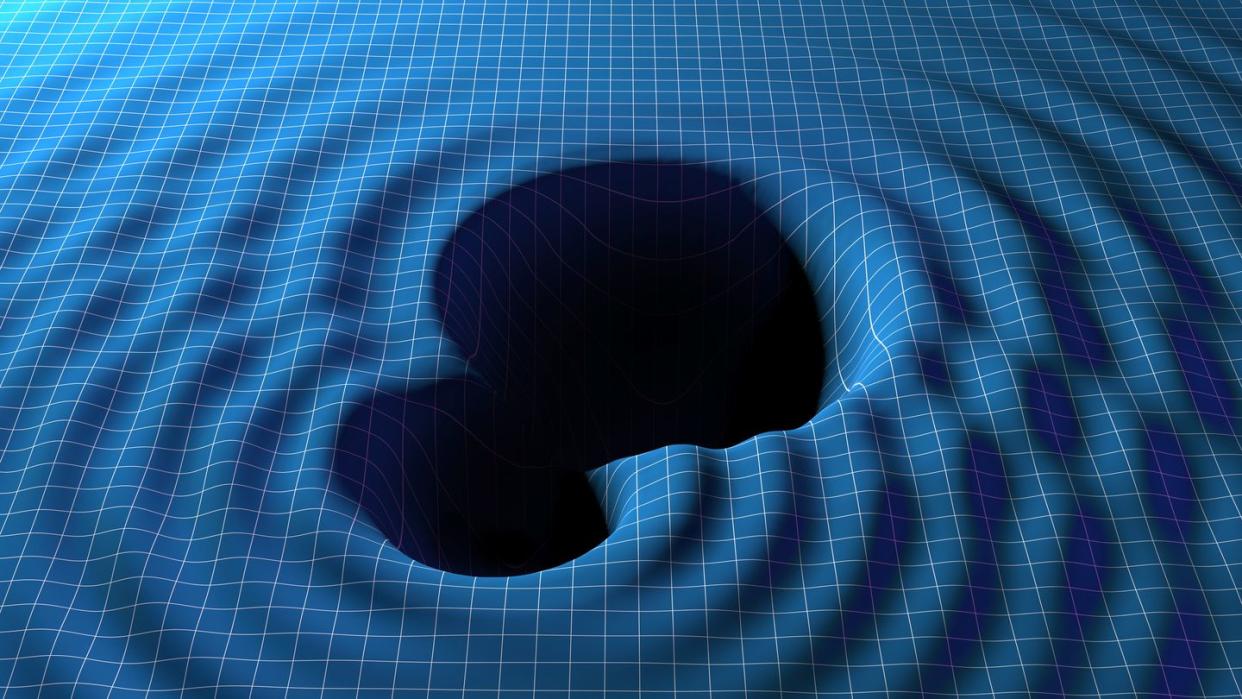The Secret of Our Existence—and Survival—May Hinge on Gravitational Waves

Gravitational waves are made by colliding neutron stars, and could explain essential... nutrients.
Our bodies rely on some "heavy elements" that may be, at least partly, from neutron stars.
It’s difficult to confirm that a particular supply of iodine or bromine is definitely from neutron stars.
All life on Earth evolved within its specific atmosphere, which is very different from those on even our nearest planetary neighbors. In new research that is not yet peer reviewed, "Do We Owe Our Existence to Gravitational Waves?," three physicists find that the origin of life on Earth could rely directly on a chain of events that leads back to gravitational waves. These giant ripples through space time can turn neutron star collisions into far-flung chemical package deliveries, which the researchers say could have brought iodine and bromine to Earth. These elements are essential nutrients in humans today, including during fetal development, and the researchers say this could be the best explanation for how they got here.
In the prepress paper, famous physicist John Ellis of Kings College London and CERN is joined by Brian Fields of the University of Illinois and Rebecca Surman of Notre Dame. They explain that the human body requires over twenty elements, from carbon and hydrogen all the way down to iodine. Most of these elements are lighter, with lower atomic numbers, and were dispersed throughout our portion of the universe by supernovae. Hydrogen dates back nearly to the Big Bang, and other elements formed as particles were flung around the newborn universe and stuck in different nuclei.
But some of the essential elements are heavier and quite a bit newer, and they can’t be explained by those same supernovae. Something else must have occurred to deposit them on Earth, and in sufficient quantities that they enabled the evolution of humans in the first place. We all carry these elements, and our biology uses them for building tissue, tapping energy, establishing our metabolism, and much more. There’s no "human life" as we know it without these heavy elements -- so where did they come from?
We can explain iodine and bromine with something called r-process, or rapid neutron-capture process. Like a character in a video game, an atom’s nucleus can move from neutron to neutron and accumulate them all, staving off radioactive decay and building atomic mass. Heavier elements can be traced back to the r-process or a different s-process, and between the two, the r-process is harder to quantify and understand because of its volatility.
Even within the r-process, it can also take place in different kinds of environments, not just in collisions between neutron stars. This research is an attempt to start to quantify one of these sources with more certainty, if that’s possible. A kilonova is a merging of two neutron stars, or a neutron star and a black hole, that throws out an extraordinary amount of light and radioactivity. Kilonovae also generate gravitational waves, something observed and confirmed within the last ten years.
It’s easy to see how bromine could have surfed the wave all the way to primordial Earth, and that iodine might as well. But how can scientists test this theory? This paper, the researchers explain, is just an exploration of the "chain of custody" of these two r-process elements all the way from one possible origin to Earth. Future researchers might focus on exploring other sites that generate the r-process, for example, or verify the "circumstantial evidence" that iodine comes from kilonovae at all.
Iodine found in humans is the isotope iodine 127, which the researchers say may come from kilonovae as radioactive iodine 129. In future studies, they suggest, physicists could study how much iodine 129 is found in lunar rock in relation to other predicted results of kilonovae. "[I]t would provide circumstantial evidence that the r-process in kilonovae does indeed produce iodine, suggesting a positive answer to the question in the title of this paper," they conclude. Thank goodness -- we’re ’dine to know.
You Might Also Like

